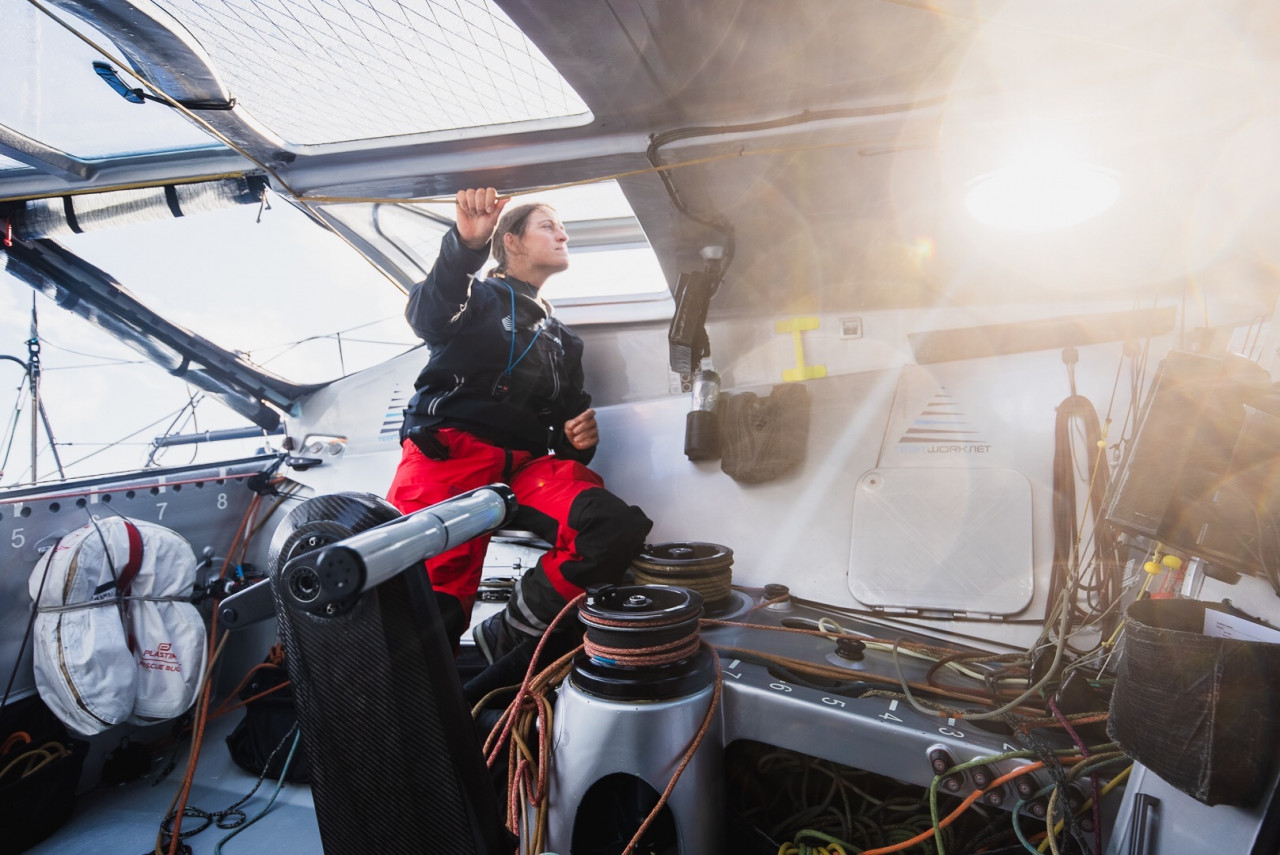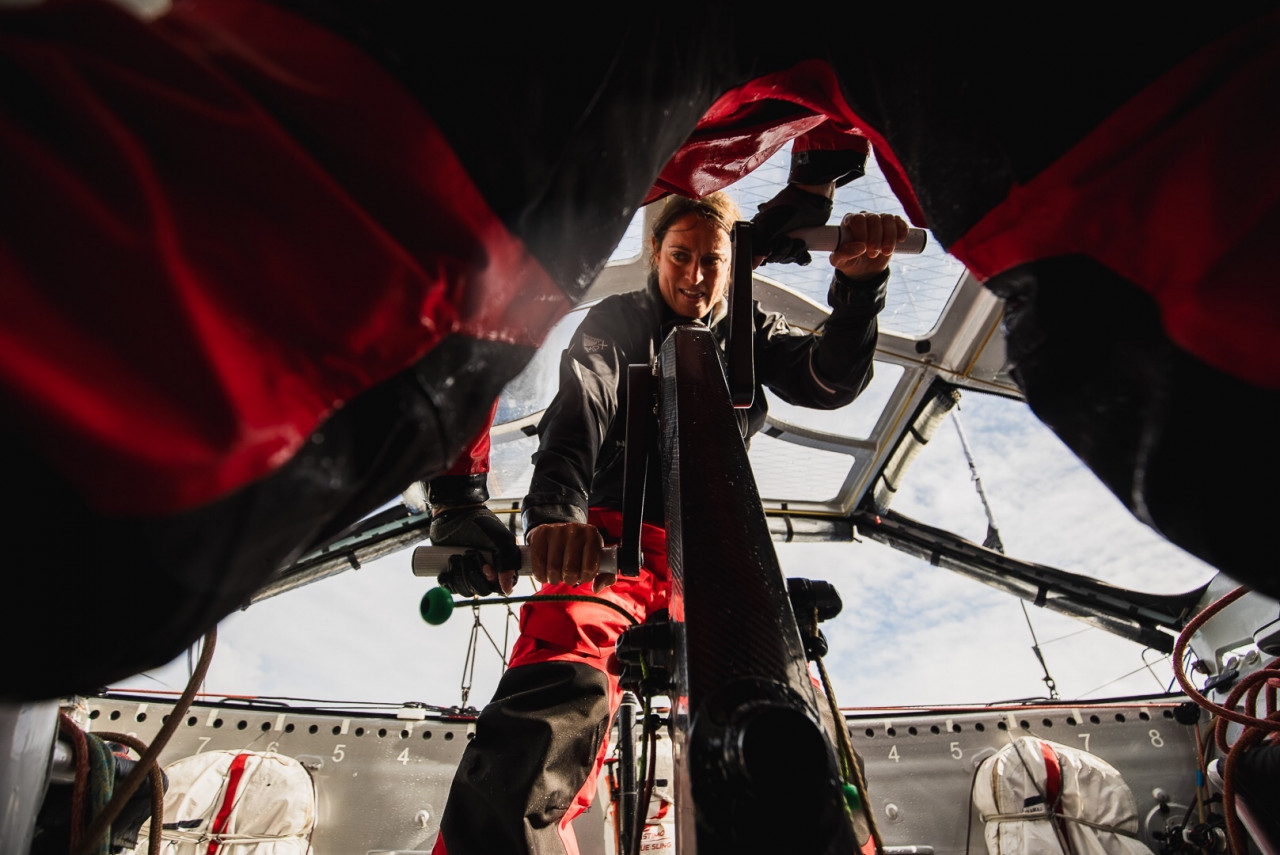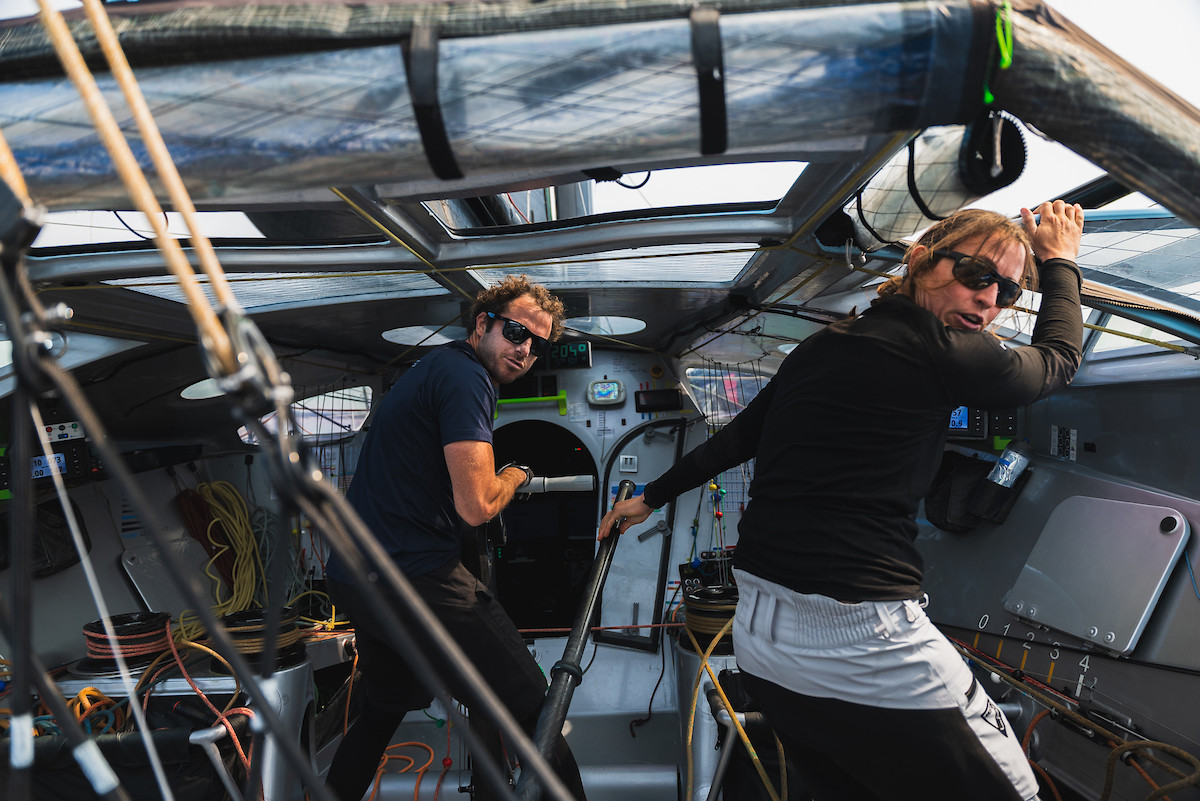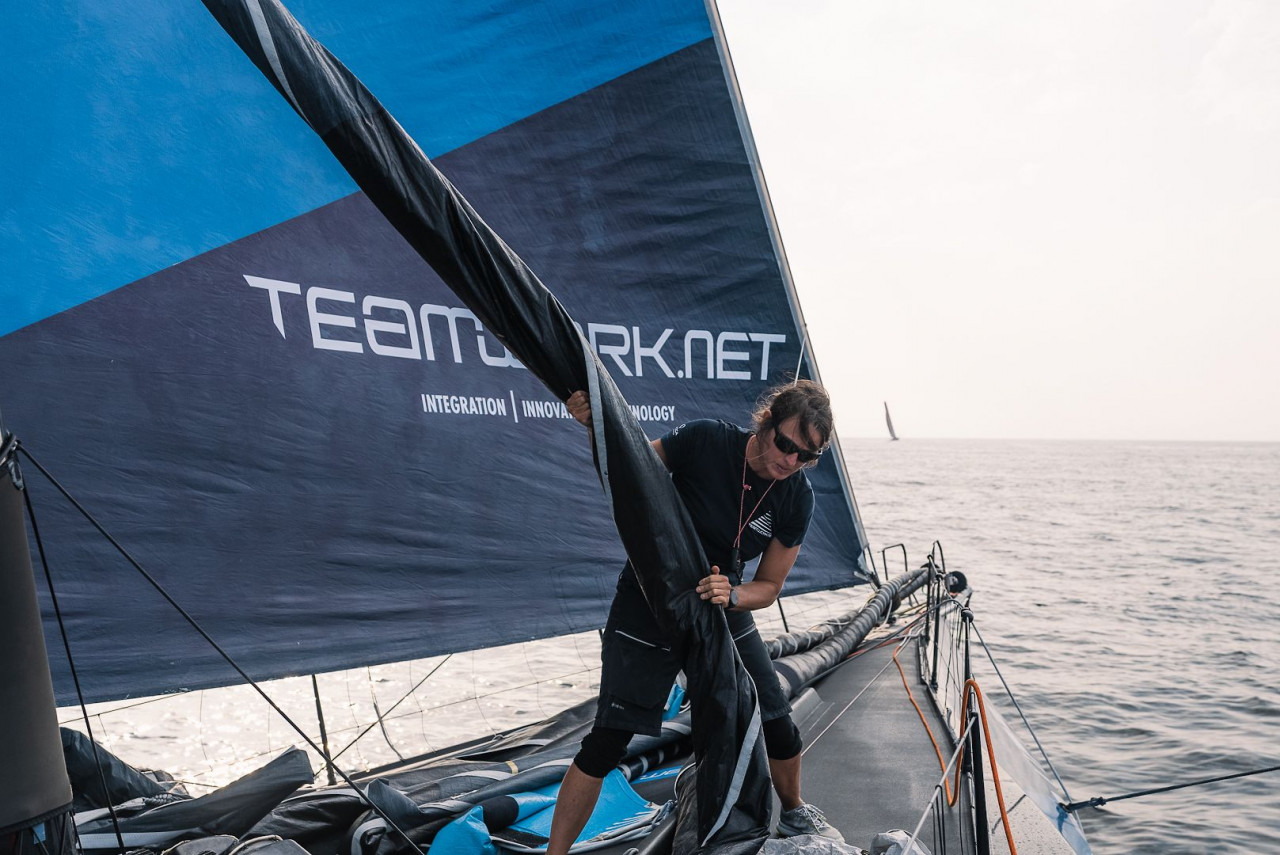Justine Mettraux on the numbers game behind performance in the IMOCA Class

Optimising top-rated IMOCAs is all about the power of information. And these days there is almost no limit to the amount of data that teams can “harvest” from their boats to help them understand how to sail them more efficiently and faster, while not breaking them at the same time.
With so many boats currently in re-fit ahead of what promises to be a show-stopper of a 2024 season – featuring two transatlantics and the small matter of the Vendée Globe – we caught up with the Teamwork-Team Snef skipper Justine Mettraux who offered a fascinating insight into how data in IMOCA has become the currency of success.
Attached to the Beyou Racing stable, Mettraux is part of a team that is continually looking to innovate and look for new ways to add fractions of a knot of boatspeed to its foiling thoroughbreds. It's an approach that the highly-rated and meticulous 37-year-old skipper who grew up sailing on Lake Geneva fully embraces.
“When we’re at sea, whether we’re racing or training, we always record everything that happens on board using sensors,”Mettraux explained. “We have load sensors on the rig, extension sensors on the foils, keel sensors that tell us what angle to position the keel, and sensors in the ballast tanks that tell us how full they are.
“All this is recorded. The only data that isn’t automatic with us, but is on most boats today, is the sail we have in the air,” she added. “We have to do this manually every time we change sail. This ensures we have all the right data recorded and makes it easier to study data at the end of races.”

The collection of information from the boat is managed by Mettraux’s performance guru and co-skipper Julien Villion, (a noted meteorologist who has been working as part of the routing cell with the Gitana Team in the Arkéa Ultim Challenge). The aim is to continually re-evaluate and update the numbers to provide Mettraux with what she calls her “dashboard” which enables her to sail Teamwork-Team Snef at its optimum speed whatever the wind or sea conditions.
“The way we work is to check again at the end of a sailing session with Julien to make sure we haven't missed anything in terms of data capture, and then we send everything to Valentin Le Pivert from KNDmarine, one of the biggest data analysis companies in the sailing world,” said Mettraux.
What Mettrraux and Villion get back is a data-driven guide to best practice on board the VPLP-designed former Charal, information that allows Mettraux to upgrade her “sail table,” which shows the best sails to hoist in any given conditions, to upgrade the boat’s polars, which provide target speed in varying conditions, and detailed tables on things like optimum ballast weights and foil trim.
In many cases the information comes back from Le Pivert in the form of graphs, with clouds of points that help Mettraux identify key crossover phases for any adjustable element on the boat. And much of this data can be uploaded into the Adrena navigation software so that it can be used efficiently in real time.
“The idea is to become more and more efficient,” said Mettraux who has always been well-known for her note-taking of settings on board, as she continually updates her knowledge on what works and what doesn’t. “Every time we sail we get to know our boat better, and every time we learn something we take care to keep a scientific record of it. That’s how we make sure to find the right parameters to apply in the current conditions more quickly.”
Like all the other top teams in IMOCA, the focus now for Teamwork is all about the upcoming Vendée Globe which will be Mettraux’s debut on the solo course after impressive performances in the Route du Rhum (7th) and alongside Villion in last year’s Transat Jacques Vabre (6th). There have been continuous improvements on the boat throughout the last two seasons, but the big one now is the introduction of new, larger foils.

Villion says the project began last winter with modifications to the structure of the foil casings to accommodate the new blades, and the goal now is to have the new foils in place in time for the boat's relaunch at the end of next month. The aim of the upgrade is to improve Teamwork’s performance in early flight conditions against newer boats, during the key crossover phase between displacement sailing and foiling as the wind strength increases.
While data drives much of the work on performance, Villion says the decision on foils was based on a combination of what he called “knowledge and specificities” and a lot of people were involved in making the final call on design and structure.
“In years gone by, there was often only one person involved in front of the architects – the skipper or the owner of the boat,”said Villion. “Now there are 10 of us around the table when we take these decisions – we have architects, we have our design team, we have the sailors and we have the performance analysts – so we have a lot of experience and a lot of data to help us decide and to base decisions on.”

But with all the number-crunching going on, Villion also makes the point that a sailor’s instinct, his or her feel for the boat, for the sea state and wind conditions, will always be a key element in all aspects of an IMOCA campaign.
“When we are around the table, I can understand what the engineers who are specialists in design or data analysis can say, but I also bring my sailor’s experience,”he explained. “And I think it is important to include that experience and to remember that simple things sometimes are good and to make sure that how we want to sail the boat is sometimes best.
“Architects just look at the data, but the sailor really knows how he wants to sail the boat, the feelings he wants from it and the top speed he wants – it depends on the sensibility of the skipper. And I know Justine very well and we have the same view on the best set-up and how to manage performance on the Vendée Globe,”Villion added.
Ed Gorman
Teams info
FLASH INFO : IMOCA Charal (Jérémie Beyou) suffers damage
At around 15h30 on Monday, the skipper of Charal, taking part in The Transat CIC, informed his shore crew of damage to his J2 forestay.
•••Sébastien Marsset (Foussier) retires
The 39-year-old skipper has announced his retirement to the race directors after just over 24 hours of racing. Sébastien Marsset cites ‘medical reasons’ and explains that his decision was taken following a consultation w…
•••